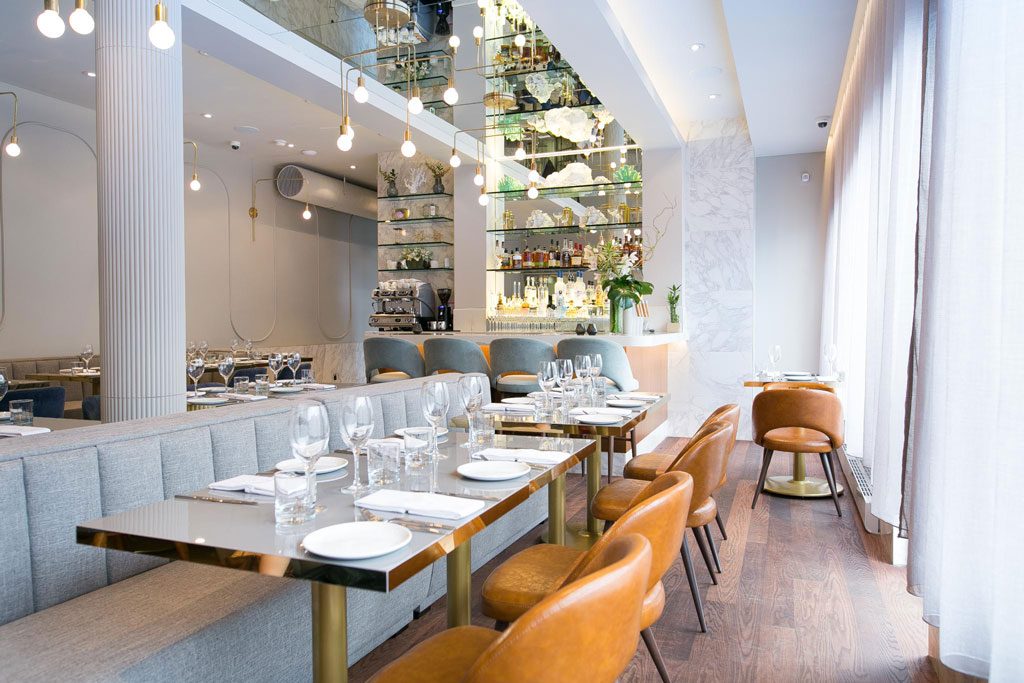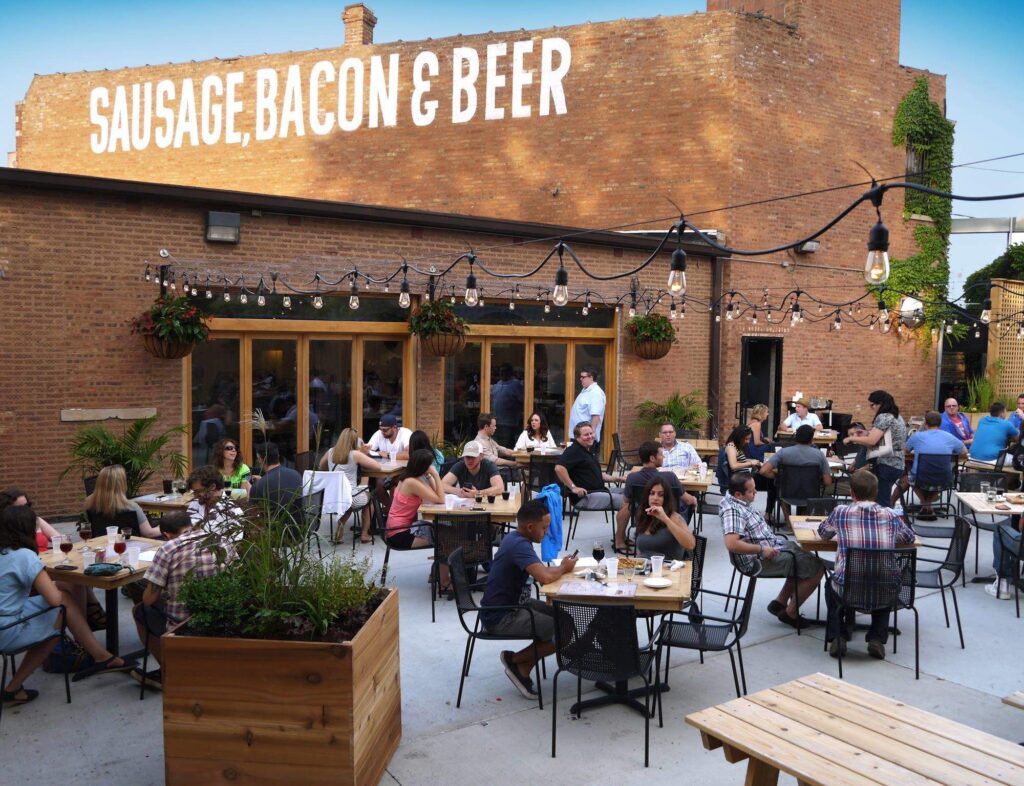03 Jul, 2020
Restaurant Reopening Guide
In the restaurant industry, the health and safety of everyone we serve are always mission critical. This is just as true now as it wasbefore the emergence of COVID-19.
Informed by lessons learned from those operating during the pandemic so far, this document provides best practices that your
operation can implement to comply with requirements from government in the following areas:
• Physical Distancing
• Cleaning and Sanitation
• Health and Personal Hygiene
Physical Distancing

General Best Practices – Customer areas:
✔ Post signage promoting physical distancing upon entry.
✔ Display signs in multiple locations that indicate the maximum number of customers and staff a restaurant can accommodate at any one time.
✔ Size of parties cannot exceed that of current public health authority restrictions.
✔ Mark direction of travel, to designate entrances and exits, pick up areas and washrooms.
✔ Unless otherwise required by local authorities, redesign floor plans to demonstrate 50 per cent posted capacity or greater if floor plans can demonstrate required social distancing.
✔ Demarcate floor with markers for any areas where a line up may occur (restrooms, pick up areas, etc.) and/or provide directional signage to indicate flow through the restaurant as well as outside.
✔ Where furniture cannot be removed to adjust for physical distancing, mark certain tables and chairs unavailable for use.
✔ Temporary table dividers may be installed to make social distancing easier for restaurants with communal seating or larger tables.
✔ Where practical, separate booth seating with physical barriers.
✔ Bar seating should have physical barrier between guest and bar or kitchen and one seat every six feet. Alternatively, bar seating must be closed until physical distancing requirements are eased.
✔ Washroom capacity may need to be adjusted to allow physical distancing.
General Best Practices – Staff areas:
✔ Train staff on physical distancing and how to best serve food with the least amount of contact.
✔ Create separation from action stations or open kitchens. Must separate guest from the kitchen or plating team with high, clear dividers if the distance between guest and staff is less than six feet.
✔ Where possible, stagger workstations so employees avoid standing directly opposite one another or next to each other.
✔ Use, when possible, directional arrows on the floor in kitchen settings to control flow of traffic and reduce interaction and crossover between cooking and clearing areas.
✔ Remind third-party delivery drivers and suppliers of internal distancing requirements. Provide separate entrance where possible.
Cleaning and Sanitation
Enhance environmental cleaning procedures and protocols with special attention to high-touch surfaces and
objects. Per guidance under development from the Public Health Agency of Canada:
✔ Use only approved hard-surface disinfectants that have a Drug Identification Number (DIN). A DIN is
an 8-digit number given by Health Canada that confirms the disinfectant product is approved for use in Canada. Cleaning Procedures
✔ Thoroughly clean the entire restaurant upon reopening.
✔ Avoid food contact surfaces when using disinfectants.
✔ Update cleaning schedules and logs to reflect increased cleaning for high touch areas including door handles, front of house counters, restrooms as well as in the back of house.
✔ Clean and sanitize shared equipment such as credit card machines, point of sale stations, safety vests, headsets, etc. after every use.
✔ When cleaning tables between every seating, any cutlery, salt and pepper shakers, sauce dispensers, or other items must be removed and cleaned as well. Tables should be left empty until the new guest arrives and only those items needed should be provided to customers.
✔ Clean and sanitize reusable menus. Paper menus should be recycled after each customer use.
✔ Make hand sanitizer available for staff and guests.
✔ Have deep cleaning response plan in place, in the event of an employee(s) testing positive for COVID-19.
Workers with COVID-19
If you believe one of your workers may have COVID-19 or has tested positive for the disease, you should conduct a risk assessment.
Based on the results, ministry inspectors may require the employer to:
- inform co-workers who were exposed and send those workers home for two weeks
- ask those workers to self-isolate and self-monitor and report any COVID-like illness to their employer
- shut down the job site while the affected workplace and equipment are disinfected
- implement other measures based on the advice of public health officials
Patios

Restaurants are encouraged to provide patios wherever feasible. Patios provide conditions which inhibit the survival and spread of the COVID-19 virus. The rules for distancing, service, and cleaning and sanitation that apply to the indoor area of the food premises also apply to patios.
✔ Restaurants may have previously installed patio coverings such as canopies, tents, awnings, and
umbrellas, but the following conditions must be met:
✔ The patio must remain fully open to the air on at least two sides to allow for adequate air circulation.
✔ Except for umbrellas, the covering should be no less than a height of 3 meters/10 feet from ground level.
✔ Configure the space to ensure physical distancing of at least two metres/six feet between patrons seated at different tables.
✔ Temporary table dividers may be installed to make physical distancing easier for restaurants with communal seating or larger tables.
✔ Groups must be seated two metres/six feet from another group.
✔ Ensure that a distance of two metres/six feet is maintained between customers or groups that are together. Co-mingling should be avoided.
✔ Limit the time servers spend within two metres/six feet of customers.
✔ Allow space for the safe circulation of customers and staff.
✔ Consider a reservation system to avoid lines of waiting customers.
✔ Ensure that lines of waiting customers do not come close to patio customers.
What restaurants should do once they reopen
Once a restaurant has reopening it’s important they maintain the safe operation of the physical space. Here are some of the guidelines:
- The owner/operator, or another person appointed for that purpose, should be present and checking to ensure adherence to protocols.
- Screen staff for signs and symptoms of COVID-19. All measures must be taken to ensure staff are well before interacting with customers and colleagues. Ensure that active screening of each employee occurs before each shift.
- Do not allow staff members who are sick to come to work. If staff are sick they should go home and stay at home. They should also be advised to complete the COVID-19 self-assessment tool and/or contact their primary health provider and get tested.
- Ensure customers are physically distancing while waiting; have them wait outdoors when necessary, but ensure that they do not impinge on the space of diners on the patio.
- Customers who exhibit symptoms of COVID-19 should be refused entry. Display posters telling customers if they have symptoms they cannot enter.
- All customers must be seated; service to standing customers is prohibited.
- Make sure that tables are cleaned and sanitized at least daily and between sittings.
- Maintain cleaning and sanitation logs.
- Consider opening doors and/or windows to increase ventilation.
- Live music is prohibited. If restaurants provide recorded music, they should turn the volume down.
- To assist with tracing contacts of COVID-19, make sure you obtain a first and last name and telephone or email address from one person in each party. Keep this info on file for at least 30 days. You may also be required to post a notice about data collection.
